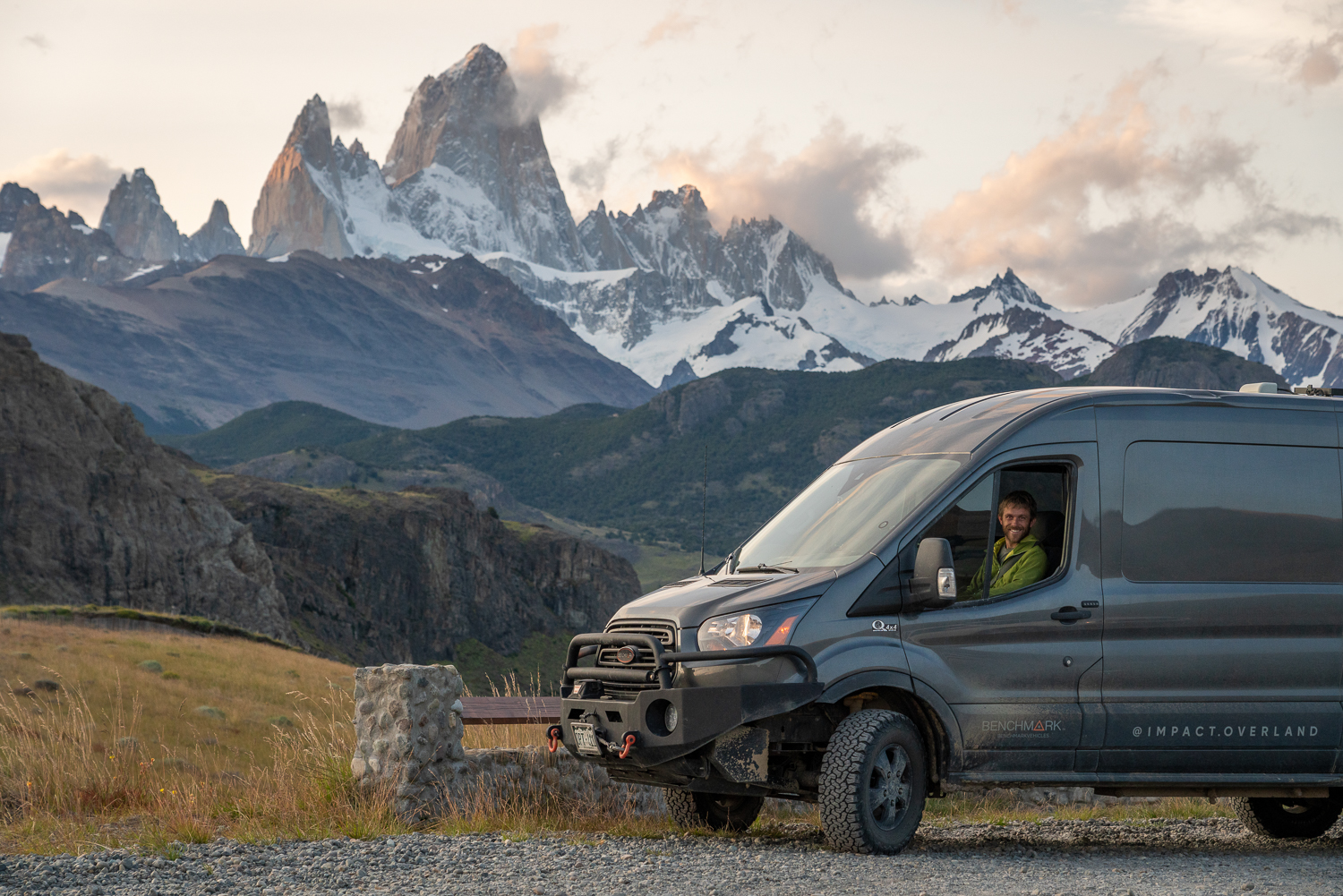Editor’s Note: This article was originally published in Overland Journal’s Winter 2021 Issue.
I wake up to the van swaying in the wind like a gentle nudge from Mother Nature, letting me know it’s time to start the day. I wasn’t surprised; we are in some of the windiest latitudes of our planet, so it was expected. I reach for my phone to see what time it is: 6:00 a.m. Another gorgeous day, I think to myself and roll over to look out the window. Man, what a view. Torres is looking especially nice with the cotton-candy-colored clouds shape-shifting around the jagged peaks. Just then, the Webasto heater kicks on at 6:05 a.m., right on schedule. Give it 10 more minutes, I tell myself; that’ll take the chill off. This van has spoiled me.
As the interior temps start to rise, I toss my comforter to the side and start my morning routine. Reaching for my phone, I put on some soft music to get the blood flowing and set the mood. I shuffle to the edge of the bed and plop down. Once out of bed, I put some water on the stove as I prep the French press. Everything is where it’s supposed to be—all within reach. There’s not enough space for clutter; I like it better that way. I slowly pour the coffee grounds into my press as I hear the water start to boil. Carefully picking up the pot, I pour the water into the press while the java aroma spills throughout the van. For four minutes, I wait. Four minutes until the first sip of a new day begins. Outside, there is a gaucho in the distance, guiding horses along the river. I think to myself, You did it, Kirk, you made it to Patagonia despite all the odds stacked against you.
Patagonia was a bucket list item. It was somewhere I dreamed about visiting via motorcycle or boat, but when I broke my neck mountain biking 11 years ago, I figured visiting a place like this was far out of my reach. As it turns out, though, that couldn’t have been further from the truth.
Overlanding came to me out of some sort of destiny—a way for me to see the world despite having paralysis from the chest down. I still have a thirst for adventure; that hasn’t changed. What did change, however, were the tools I needed to make my dreams manifest.

Meet Spock
My current vehicle, Spock, is my third van (“Van3PO”) and a compilation of the knowledge I have gained in 10 years of traveling in other vans. Spock has become so much more than just a vehicle for me. He’s a piece of equipment strategically designed to make my world more accessible. Within Spock, I can be independent and do everything; it’s once I get out that life gets tricky.
When I was first planning on building a vehicle capable of world expedition travel, I knew I had a few key decisions to make. The first and foremost was picking a platform that is functional for me in a wheelchair. A Toyota 4Runner with a rooftop tent, for example, is not going to happen.
I knew I needed a pass-through cab, room for a wheelchair lift, enough floor space to allow for a living area, and something small enough to still be my daily driver. This criteria quickly eliminated about 95 percent of all vehicles out there. I basically had a choice between a van, box truck, or EarthCruiser-style expedition vehicle. Although I loved the idea of a Fuso 4WD EarthCruiser, my bank account did not. So I went with a van.
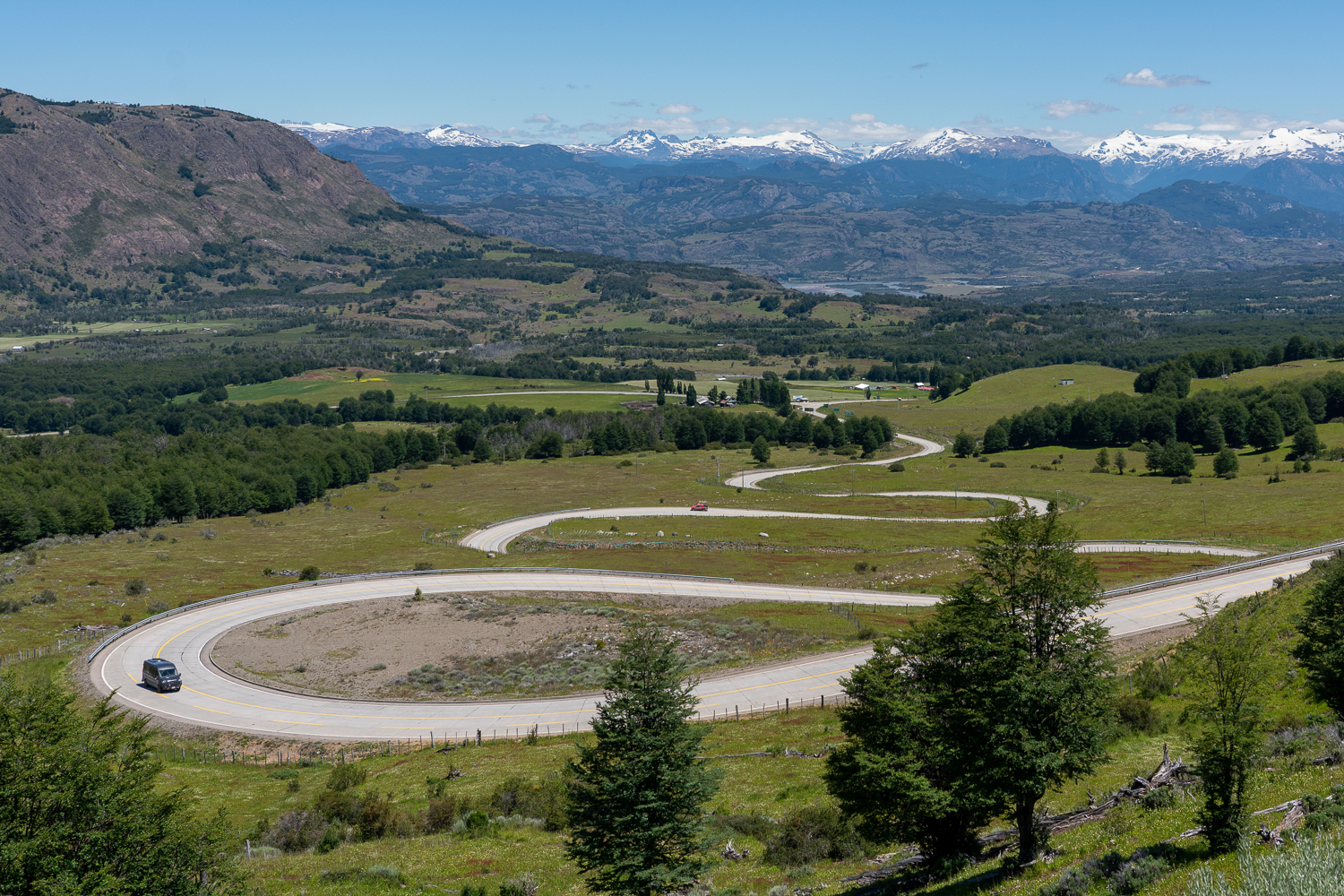
I chose a 2017 Ford Transit with a Quigley 4×4 conversion. I went with the Ford over the Mercedes Sprinter due to its serviceability and because they offered the 3.5L EcoBoost gasoline motor. I knew I’d be traveling south of the border, and with the US diesel regulations, the Mercedes diesel offered in the States won’t work on worldwide diesel fuel. I also preferred the height of Ford’s medium-roof Transit because it will fit inside a high cube shipping container but still feels plenty spacious. Spock stands at about 8’10” to the tip of the MaxxAir fan with a 5’9” interior cabin height.
Living in Colorado and spending much of my time off-pavement, a Quigley 4×4 conversion was a no-brainer. Unlike the AWD vans, the Quigley conversion includes a transfer case with a 50-percent power split between the front and rear axles and high/low range. Spock is still no rock crawler, but at nearly 9,000 pounds, I don’t expect to keep up with a Rubicon. The 4WD is still surprisingly capable and gives me the ability to get to some wonderfully remote camp spots.
The Chassis
After a few close encounters with Bambi, I protected the body with Aluminess front and rear bumpers. I then added Clearwater Dixi lights and a Warn VR12-s winch which sits cradled within the bumper for when things don’t go as planned. I also carry MaxTrax with me everywhere I go, along with a Garmin InReach and satellite phone (for South America). I rarely push my luck if I’m traveling by myself because chances are if Spock gets stuck, I wouldn’t be able to do much personally—but I always have a plan B. Communication with the outside world is vital since I can’t exactly walk out of the trail to find help. I take this precaution seriously.
The BFGoodrich K02 255/70r16s tires give me decent clearance, but I still armored what I could on the undercarriage for added protection. Spock has a Van Compass intercooler and rear differential skid plates, and my custom spare 25-gallon fuel tank has a reinforced steel bottom. The suspension has been beefed up with Bilstein B6 struts, custom-tuned Fox 3.0 rear shocks, and Air Lift airbags. The airbags are used with a Bluetooth remote for leveling the van at camp. An unlevel house is a nightmare when you live on wheels like me.
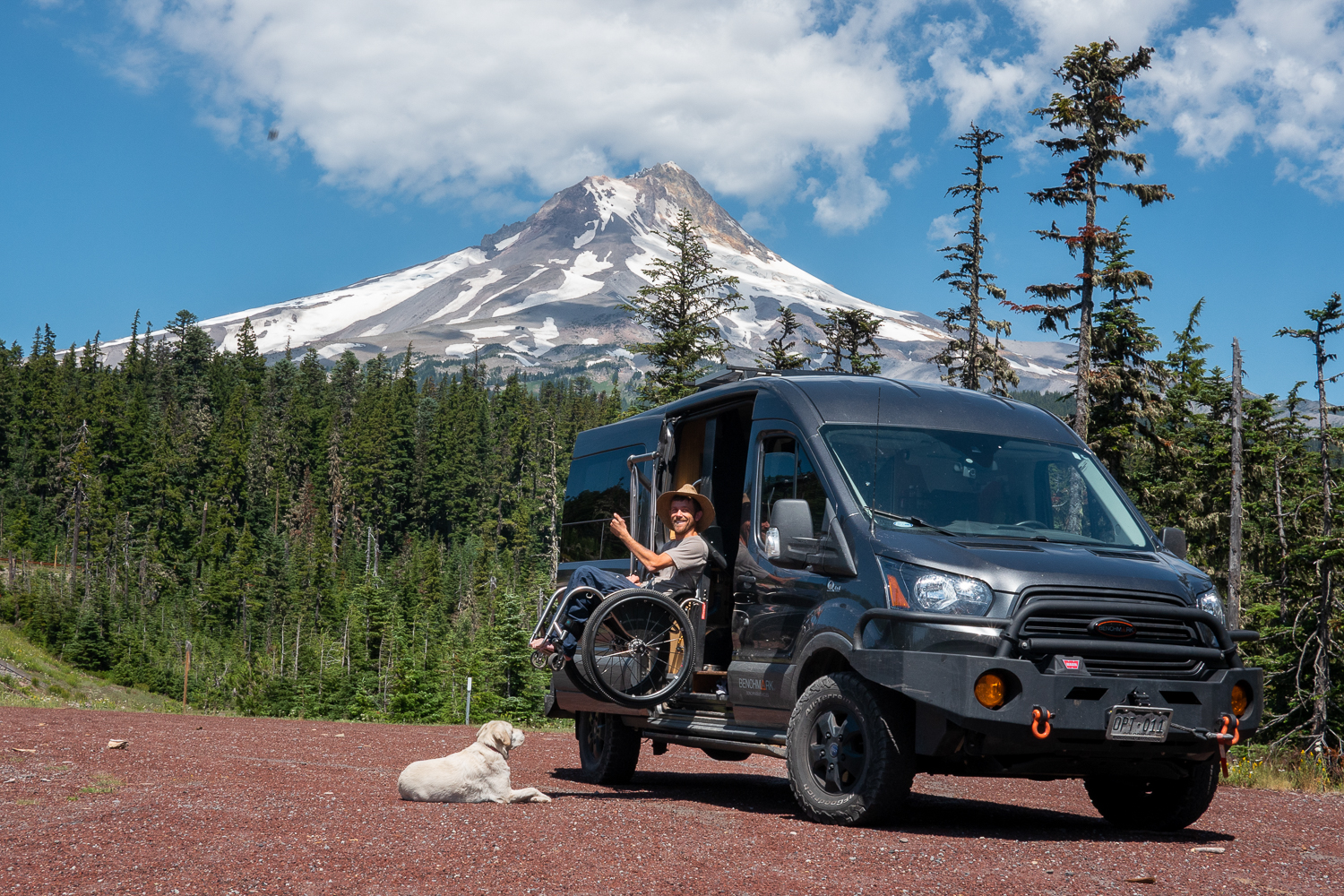
Impact Overland Mobility Mods
Being a quadriplegic, I need special modifications to assist with my lack of finger dexterity and mobility. To get in the van, I push a button on a key fob, and the cargo power sliding door opens. I roll up and hit a switch on the SuperArm lift which deploys down toward my chair. Then, I attach the straps to my chair, and the lift hoists me into the van. This type of lift isn’t very common, but it works great for this sort of application. It requires much less space, is a simple design, and just works.
Once inside the van, the power driver’s seat base moves back on a track system while having the ability to twist 180 degrees and raise up and down. This allows me to transfer out of my wheelchair into the seat from inside the back of the van and then move up toward the cockpit. I can also turn the seat to face backward at camp to allow for more seating.
Without having any active grip, I use a steering knob that holds my wrist known as a tri-pin to steer the wheel while my other hand pushes a lever down toward the ground for gas and toward the dash for braking. It takes a little while to get used to, but before long, it’s second nature.
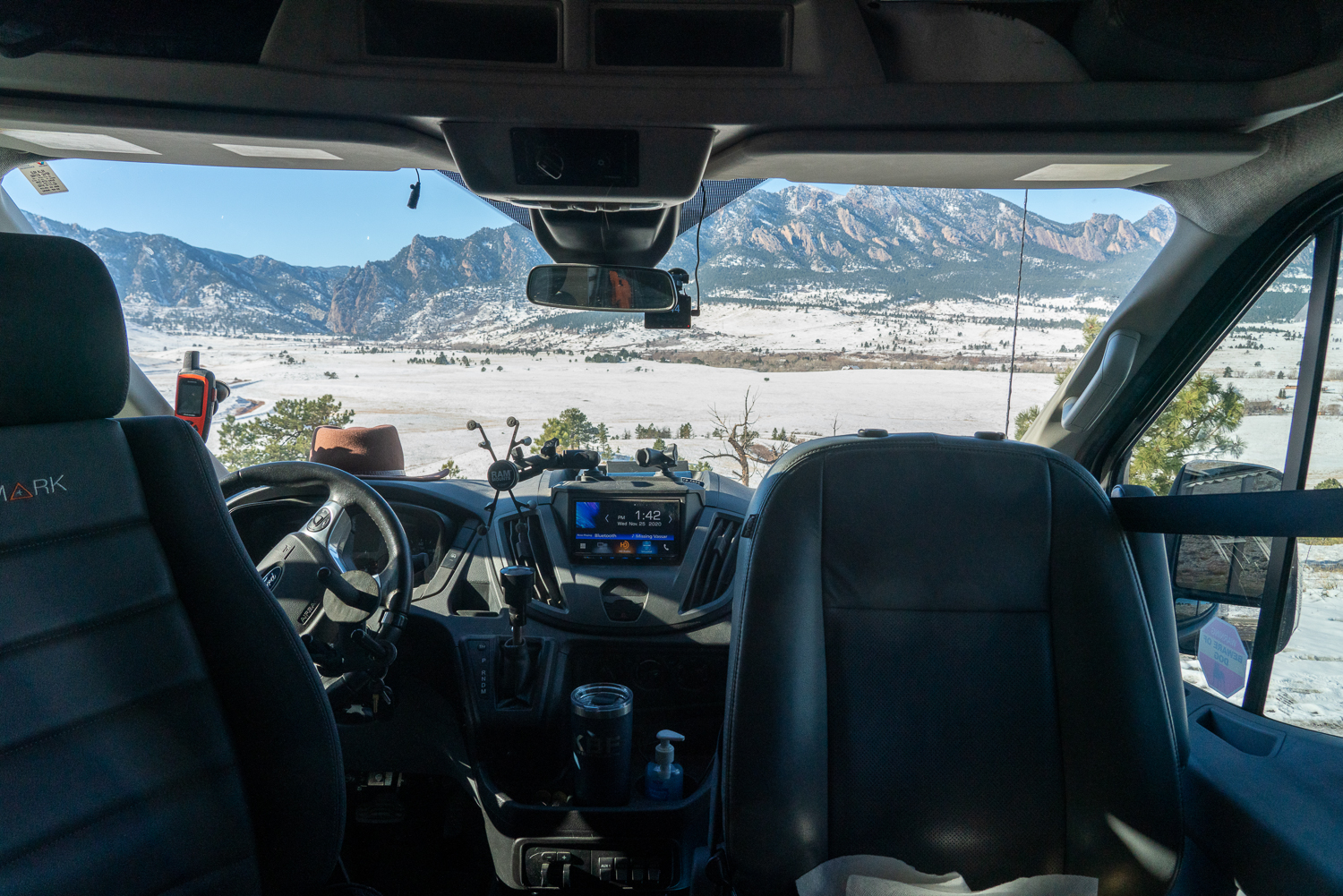

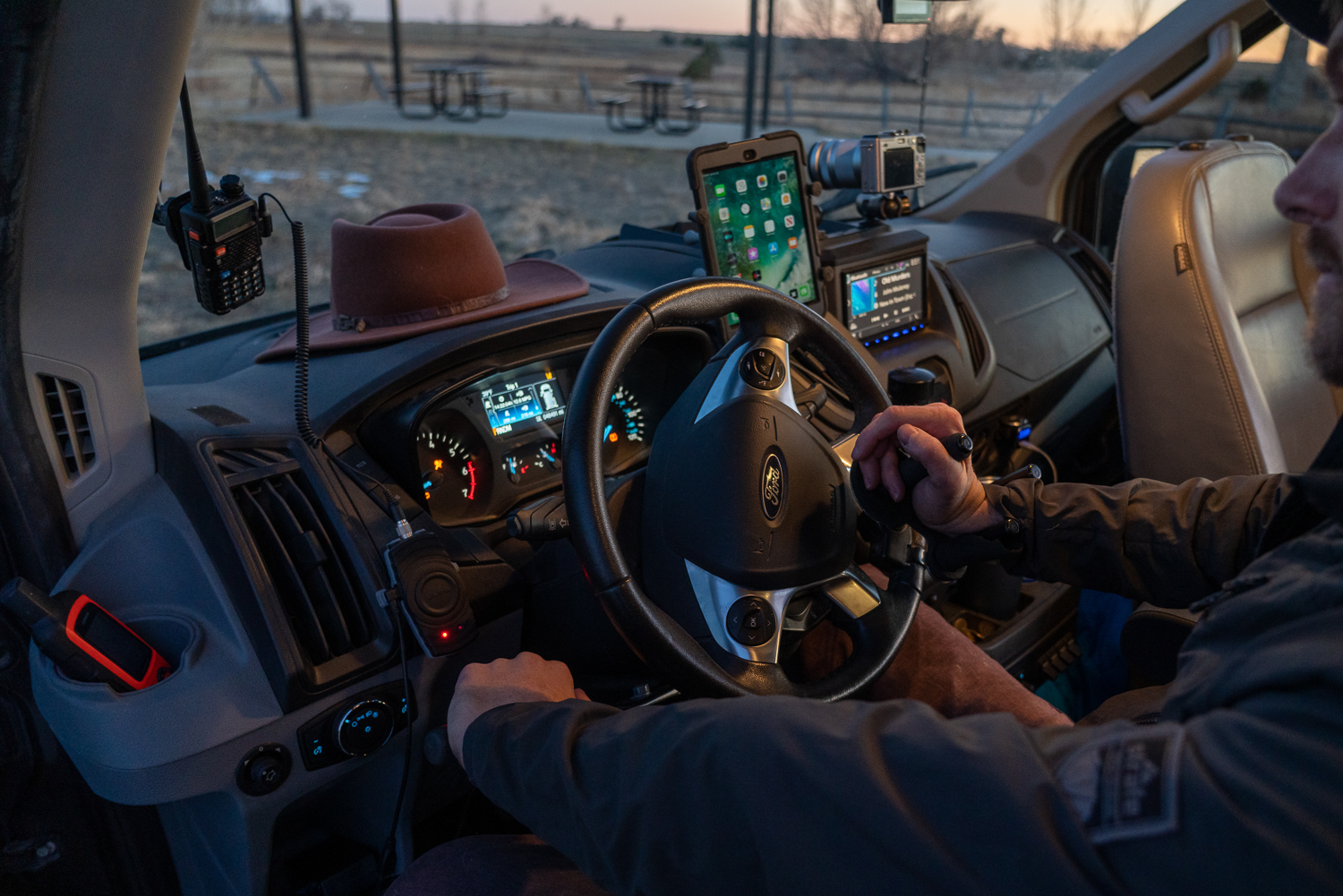
The dash is my command center. I moved the electronic shift buttons within reach, integrated a Sena SR10 Bluetooth receiver with my head unit to give me a hands-free solution to communicate with other people I’m traveling with over ham, and have an Ipad mini for navigation. I went ahead and upgraded the sound system to a full JL system because road trips are just better with good tunes.
The “accessiblizing” didn’t stop there, though. I also filled the drawers with adaptive cooking utensils, jar openers, and installed a motion-activated soap dispenser. Any trick or tool that makes my life easier has a place in Spock. I even have an air compressor outlet inside the van in order to pump up my tires if need be.
The Layout
The interior was designed through experience and sleepless nights. I had traveled enough to know certain setups that worked and those that didn’t. When designing the layout, I would set up coffee tables in my living room to mimic how much space I needed in the galley. I measured table heights and how tall drawers needed to be to clear peanut butter jars. I implemented pull-out cutting boards that could be used as roll-under workspaces and made sure the transfer to the bed was feasible. I thought about light switches by my pillow, secret compartments for passports, and a place to charge your phone within reach from bed. It all went into the design.
The sink is undercut and makes washing dishes more manageable; it also allows me to turn around in my chair in the middle of the van. Fifteen gallons of water mounted under the van keeps me hydrated with an additional LifeSaver 5-gallon jerry can as a reserve/filter. Drawers with special latches were used nearly everywhere, allowing access to the far reaches, and the fridge was mounted off the ground so I can use two hands to grab items out without needing core muscles. The induction stovetop folds out of the way when not in use, making space for the driver’s seat, yet it allows me to roll under it when flipped up—win-win.

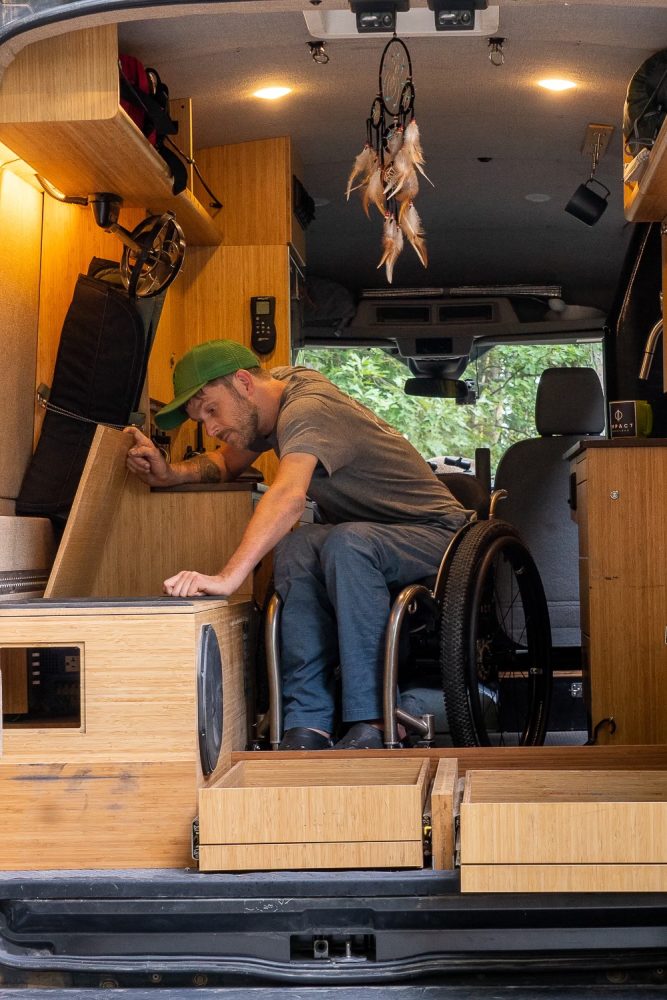
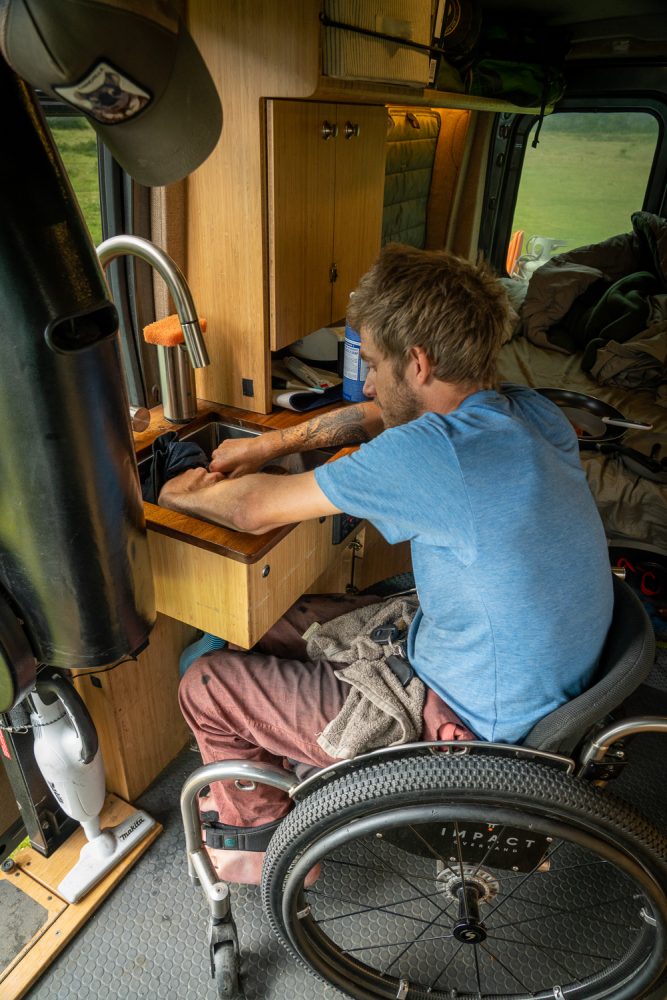
A 200-amp hour Battle Born lithium battery bank with an Aims 2,000-watt inverter is neatly tucked away under the bed yet serviceable if needed. And 180 watts of solar are on the roof, keeping things topped with a 60-amp battery to battery charger for quick replenishment when the engine is running.
Because of where I broke my neck, my body doesn’t regulate body temperature automatically anymore, so I insulated the van as best I could to stay climate controlled. I have a Webasto gasoline heater for when it’s cold and a Webasto rear AC unit for when it’s hot. I can open the screened windows, turn on the MaxxAir fan and a couple of other 12-volt fans, and usually stay cool throughout even the hottest nights.
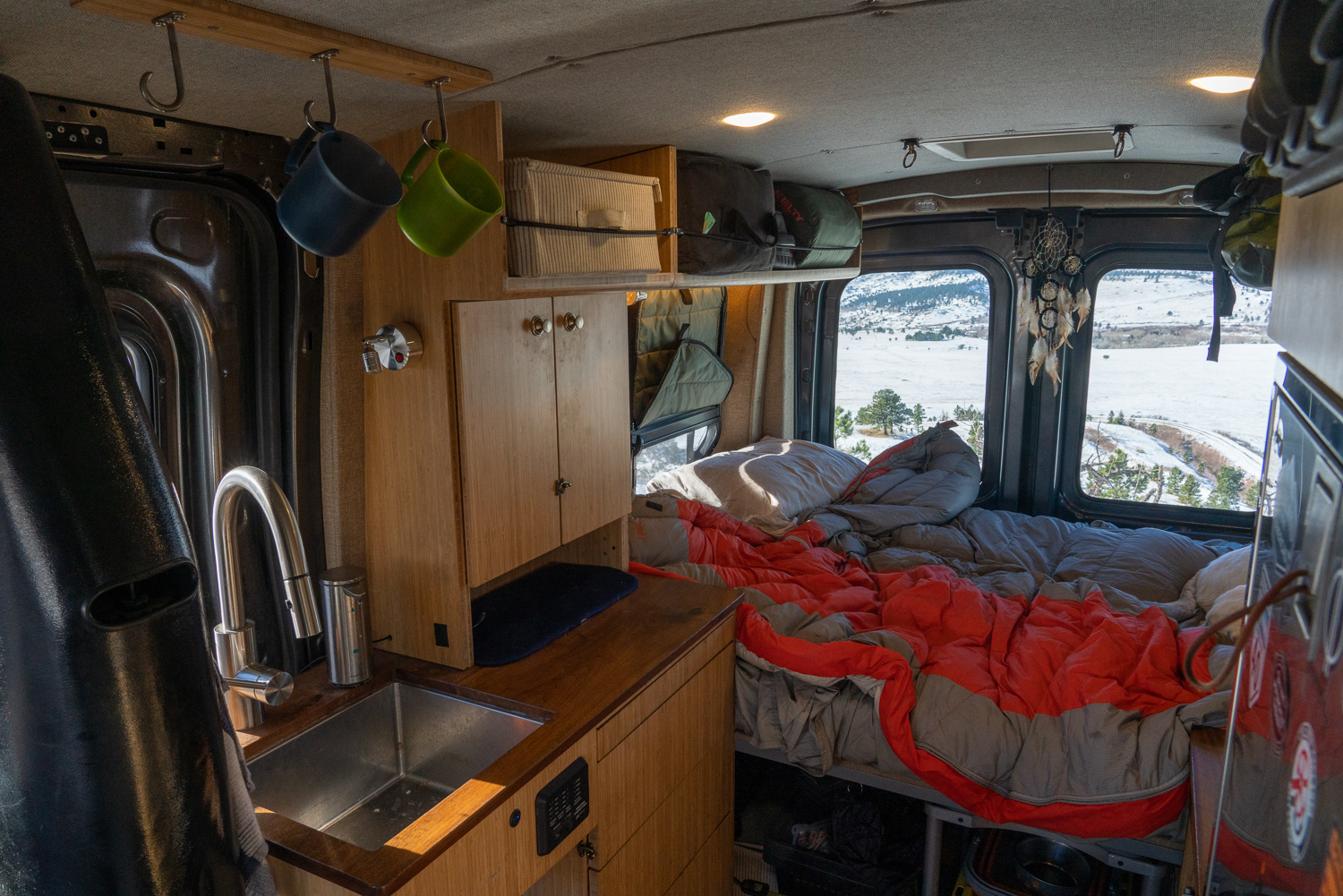
The interior was constructed by Benchmark Vehicles out of Portland, Oregon, and they did a great job. I had meticulously designed the interior, and they were the guys who made it all come to life. We used bamboo, primarily for its density and strength, and a darker walnut for the countertops. I wanted Spock to be functional, reliable, and able to handle abuse. The guys at Benchmark are the ones who made it look good in doing so.
All in all, I have been very pleased with how this build turned out. I prefer to stay in Spock rather than most houses or hotels because it’s easier for me. It’s my little home, my freedom pod. In the two years since the build’s completion, I’ve been from Seattle to Key West, Maine to Cabo, and spent four months driving around Chile and Argentina with my brother. I had planned to drive the whole way back up to Colorado, but then the pandemic started. My vehicle has truly changed my life, and my goal is to use overlanding as a way to help others change theirs too.
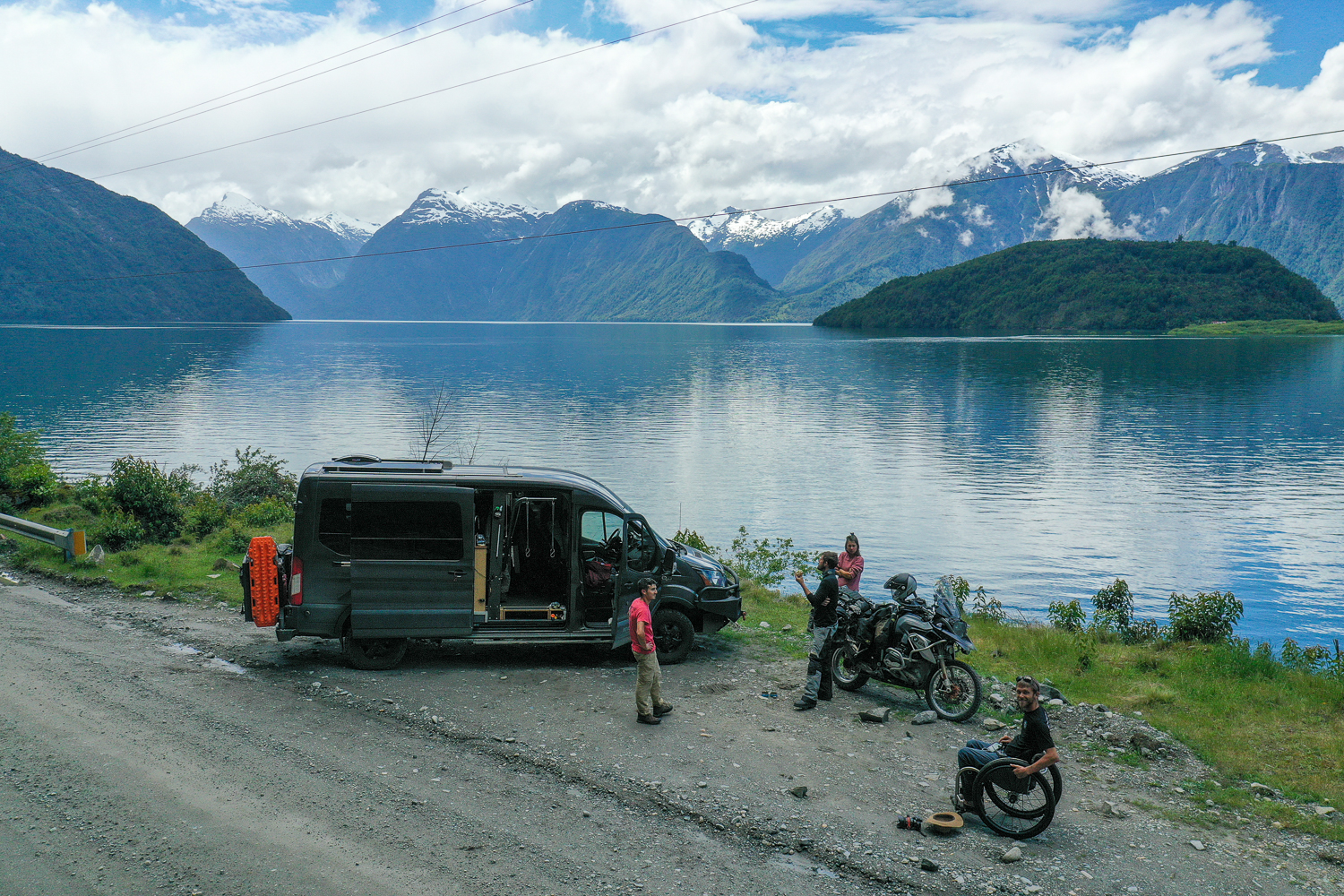
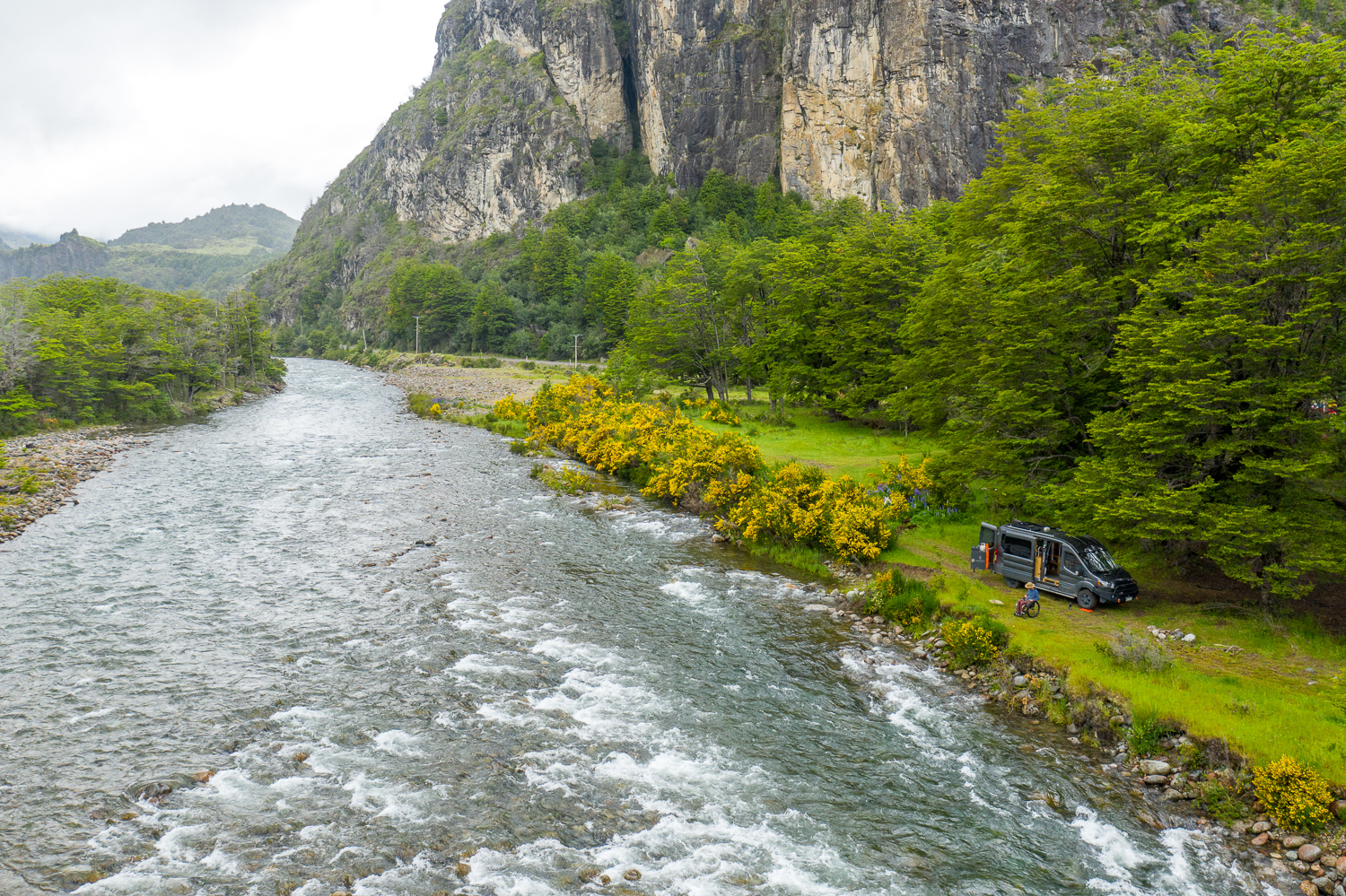
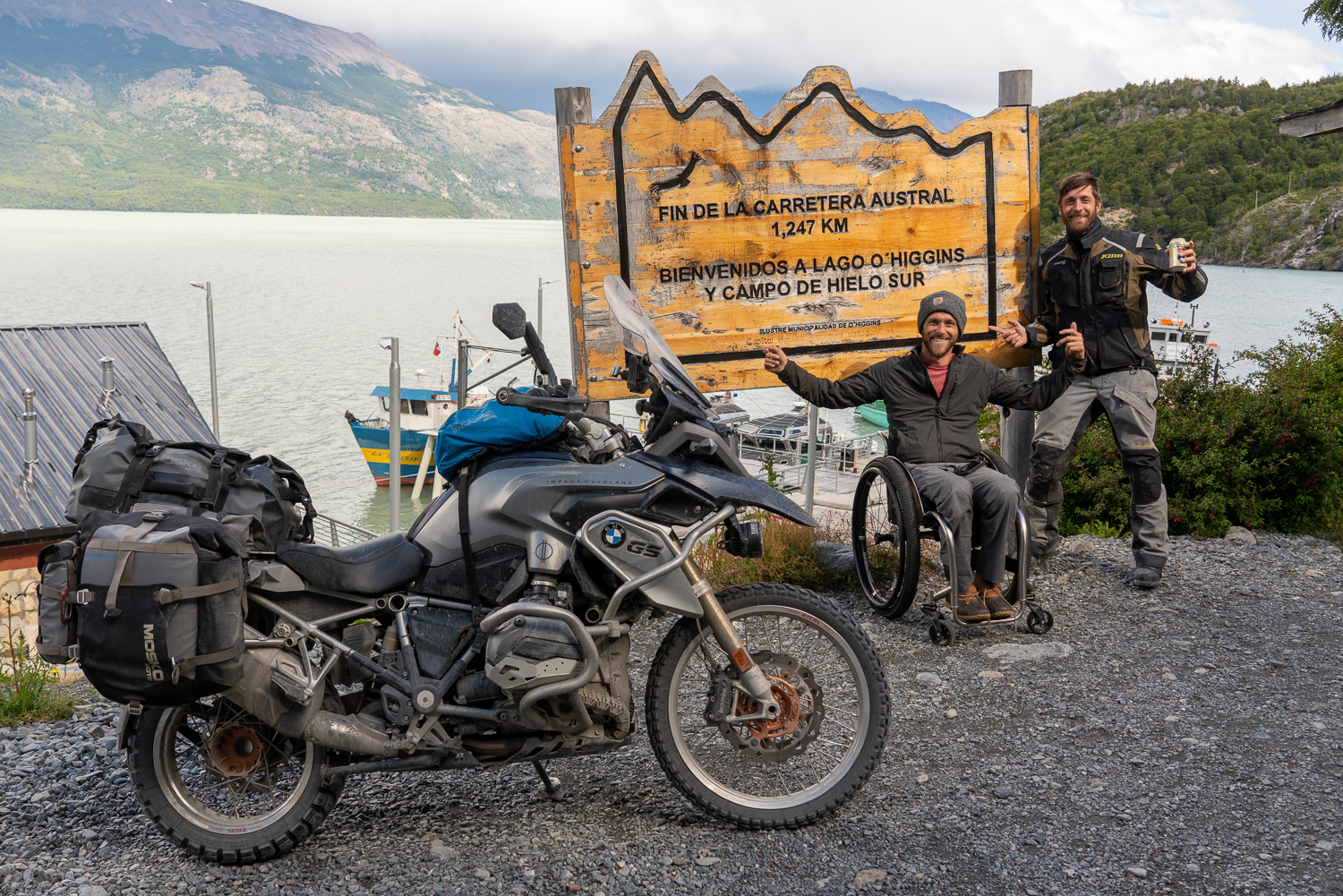
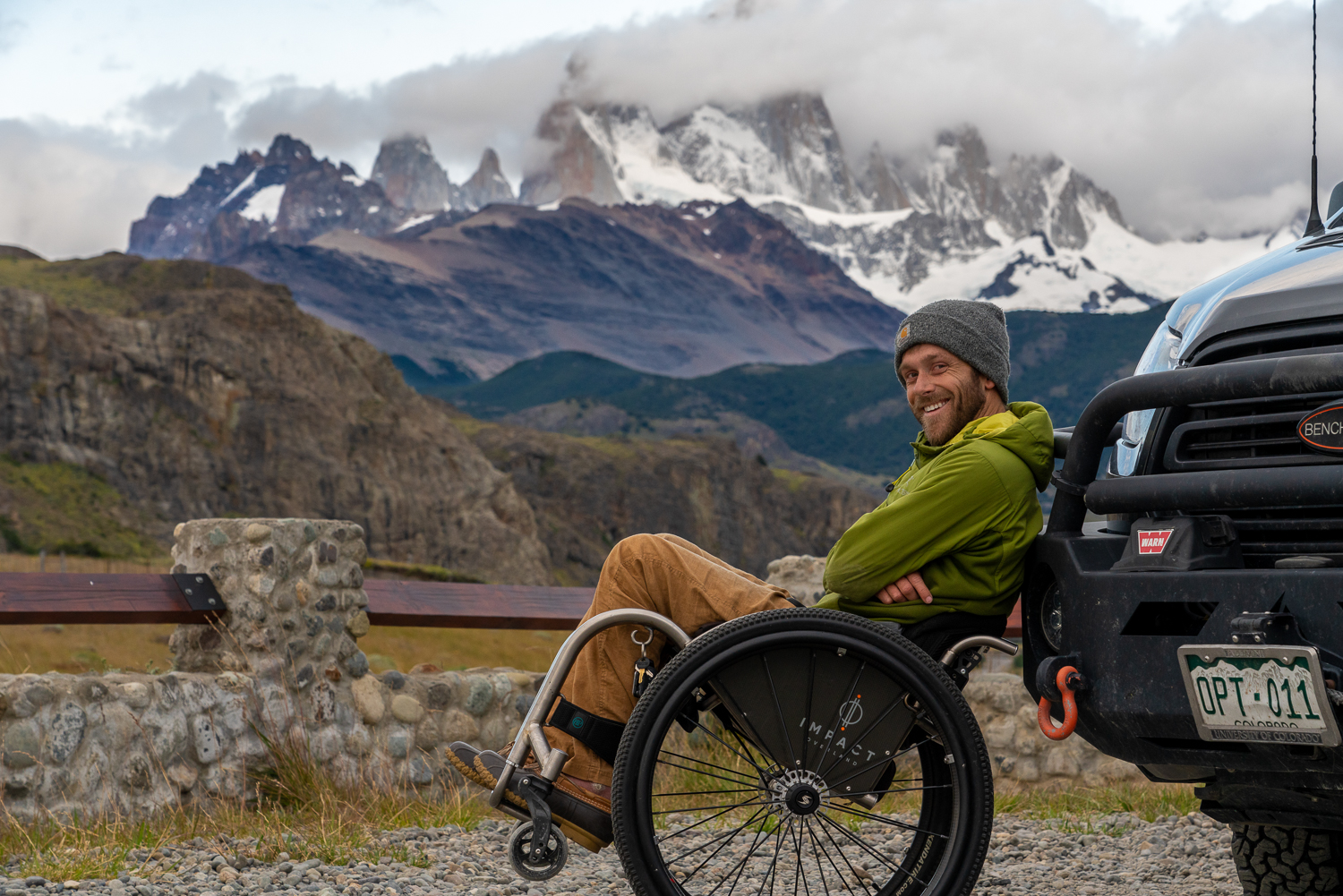
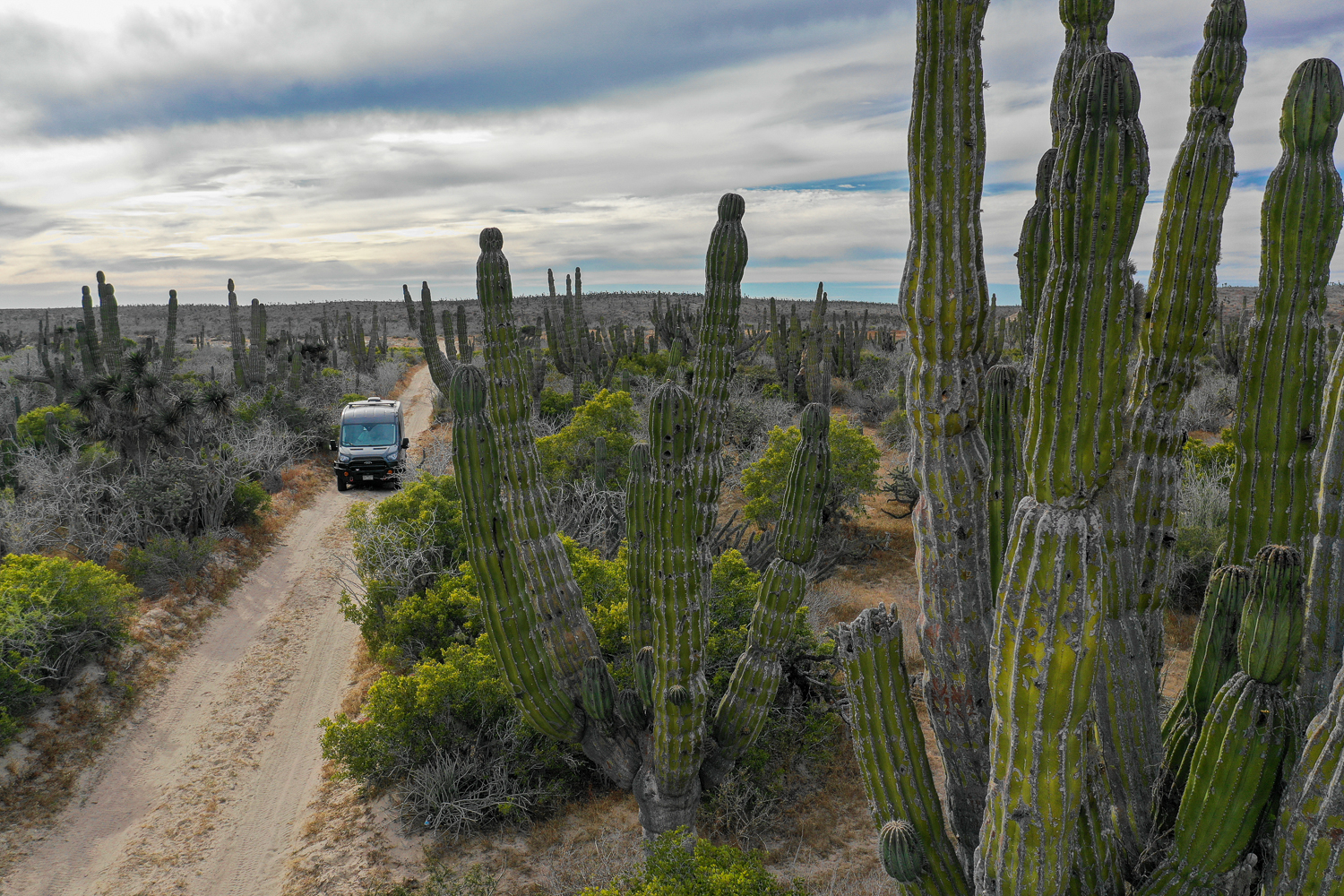
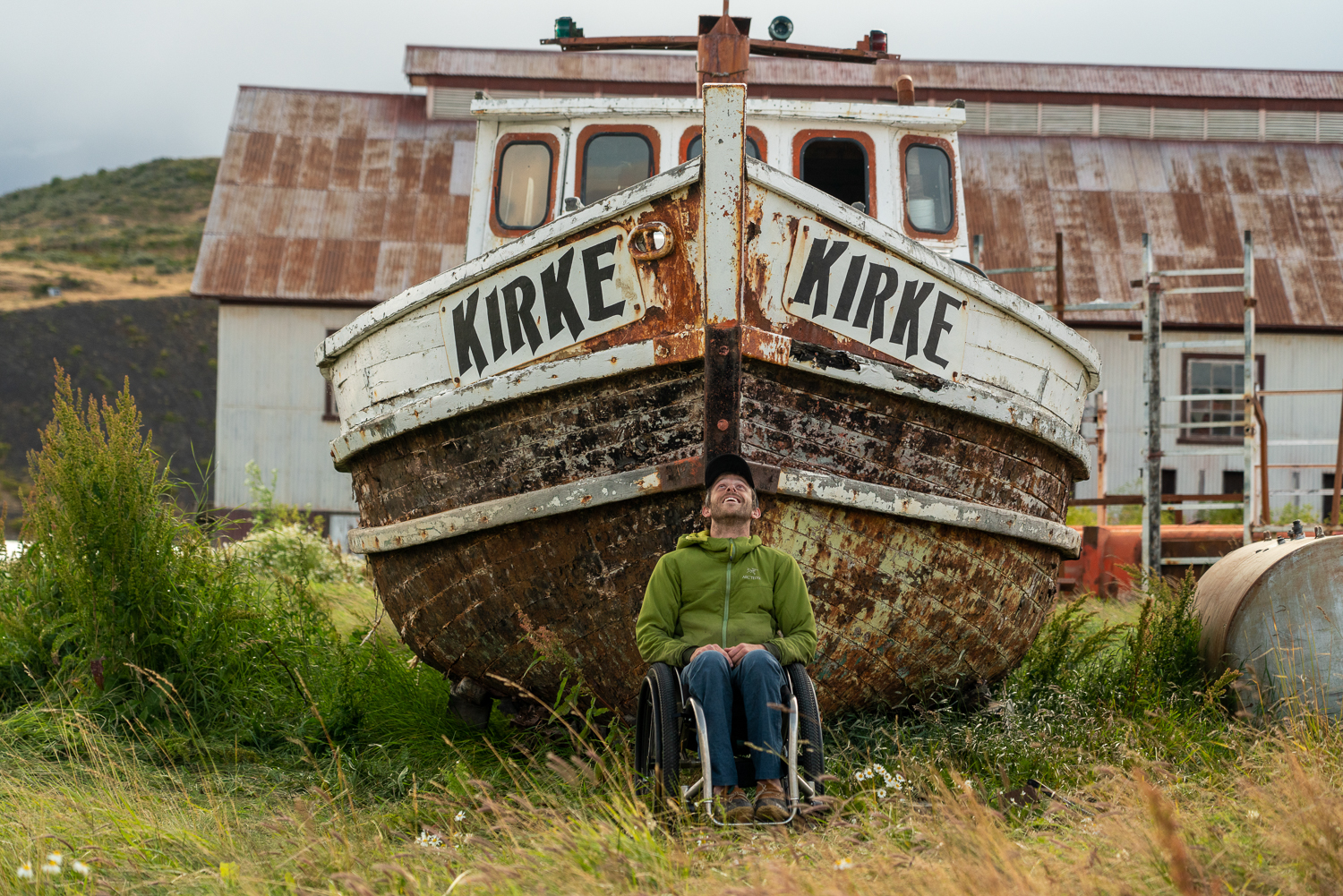
Specifications
2017 Ford Transit 250 (Medium Roof)
Driveline
3.5L twin-turbo V6 EcoBoost gas motor
4:56:1 gearing
Quigley 4×4 conversion
Limited slip rear differential
Open front differential
Bilstein B6 HD struts
Fox 3.0 Van Compass tuned rear shocks
Air Lift airbags
SumoSprings coil
Wheels and Tires
BFGoodrich K02 255/70r16, E-rated
Factory powder-coated 16-inch wheels
Recovery and Armor
Aluminess front and rear bumpers
MaxTrax
Warn VR12-s winch
Van Compass intercooler and differential skid plates
Warn heavy-duty Epic recovery kit
ARB high output compressor
Mobility
SuperArm wheelchair lift
B&D 6-way power seat base
AutoCool power sliding door
MPS right-angle hand controls
Tri-pin steering knob
Sure Grip adapted shifter
FreeWheel wheelchair attachment
Smart Drive MX2+
QuadTools reacher
Communication
ISat satellite phone
Garmin InReach Explorer+
Sena SR10 Bluetooth adapter
Baofeng UV-5r
Accessories and Upgrades
90-watt w Zamp solar panels, two
200-amp Battle Born lithium batteries
2,000-watt Aims inverter
Sterling BB1260 battery to battery charger
True Induction single burner cooktop
18-gallon water tank
LifeSaver jerry can
Mr. Heater Buddy instant water heater
Webasto AirTop 2000ST heater
Webasto London HVAC rear AC
MaxxAir Deluxe fan
C.R. Laurence windows with vents
Clearwater Dixi lights
LED interior/exterior lights
Scheel-Mann Vario driver’s seat
25-gallon auxiliary fuel tank
AMP engineering power step
Isotherm Cruise 85L fridge/freezer
Primus Profile 2-burner stove
Alps mountaineering table
Ram mounts
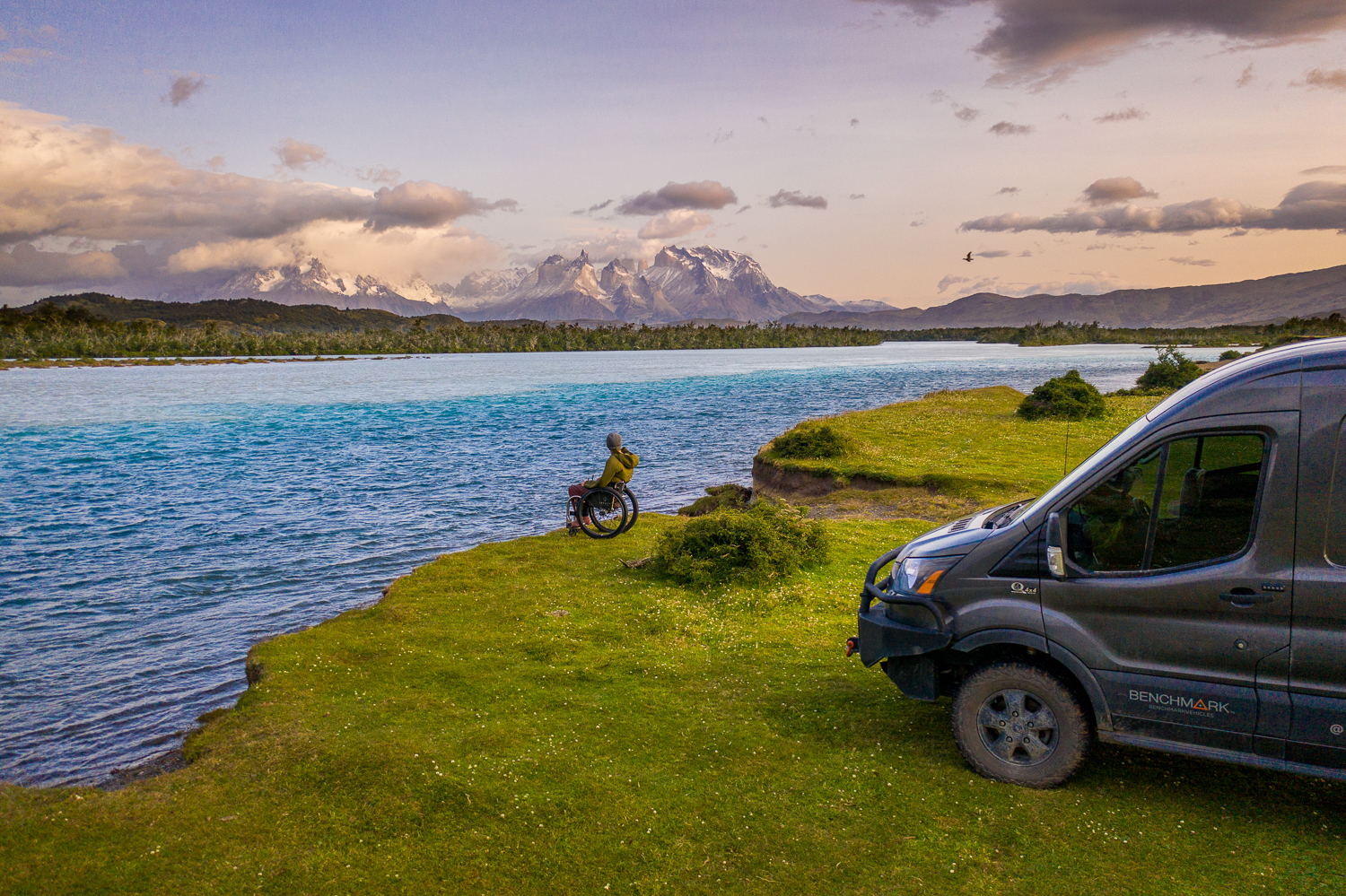
Read more: Kirk Williams of Impact Overland shares his go-to apps in Overlanders Share Their Favorite Apps.
Our No Compromise Clause: We carefully screen all contributors to ensure they are independent and impartial. We never have and never will accept advertorial, and we do not allow advertising to influence our product or destination reviews.


